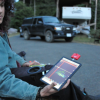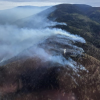In a flurry of wings, six mother bats drop from their roost and take to the half-lit sky.
“Wow!” says Heather Thomson. “They’re early tonight.”
Thomson, program manager for the Cumberland Community Forest Society, sits with five other citizen scientists in folding camping chairs near a rural Comox Valley home on June 18.
It’s a clear, still night, and they’re tucked into sweaters while positioned under three bat boxes.
The six bat enthusiasts are here for the BC Annual Bat Count, an initiative launched in 2012 for researchers to monitor bat health across the province.
(6).jpg)
As the chorus of bird songs fade, the volunteers tune their ears to the soft squeaks of the little brown myotis, or the little brown bat, as they’re more commonly known.
In particular, they’re on guard for the arrival of the bats’ greatest threat — white-nose syndrome (WNS), a fungal disease decimating bat populations across North America.
In this region, Thomson’s non-profit society is overseeing the Comox Valley bat count. With special counting apps on their phones, she and the other volunteers record each individual bat as it flies out of the boxes or from the house’s attic.
The bats flutter and flap directly over the volunteers’ heads before rising upwards to begin their nightly insect feast.
Comox Valley bat count on guard against a disease killing millions of bats
One popular misconception about bats, says Thomson, is that they’re disease-ridden. In fact, she explains, only 0.5 per cent of bats have rabies.
“And that’s the only disease that is problematic for humans,” she notes. WNS, for example, is not known to affect people.
But WNS is extremely dire for bats, especially little brown bats. It’s killed an estimated six million of them in the U.S. and Canada since 2006, according to the provincial government’s Wildlife Health Office website.
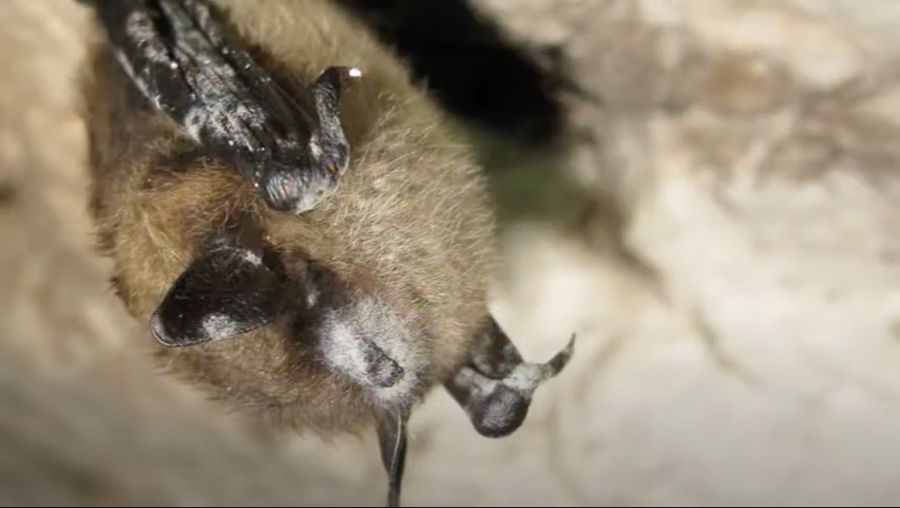
Little brown bats are especially susceptible because they gather in large maternal colonies — like the one on this farm — and hibernate together.
Such close quarters allow the disease to easily transmit to other bats, and once a colony is infected, mortality rates can reach 80 to 100 per cent.
While the fungus causing WNS hasn’t yet reached Vancouver Island, it was detected in Grand Forks, BC, in 2023 for the first time.
If it arrives here, these volunteers would be among the earliest to detect the disease, which would lead to a drop in bat population compared to the previous year’s count.
Tonight, as the bats emerge, their silhouettes are contrasted against the dim twilight sky. But they soon disappear against a darkening forest that surrounds the farm.
Though the volunteers catch only a glimpse of the animals, a small red device plugged into a tablet in Thomson’s hands can detect the bats’ high-frequency echolocation calls — high-pitched sounds that let bats navigate, but which are beyond human hearing range.
Each bat has a unique call. When combined with an app, the tablet flashes which species are nearby.
Bats love bugs — and their insect diet helps us
In total, nine species of bat dart around the skies of Vancouver Island. Some have noteworthy names such as Yuma myotis, Townsend’s big-eared bat and hoary bat.
However, you are most likely to encounter the little brown bat, which is the most numerous.
Despite this, it is the only federally protected bat species on Vancouver Island because of its dwindling numbers elsewhere.
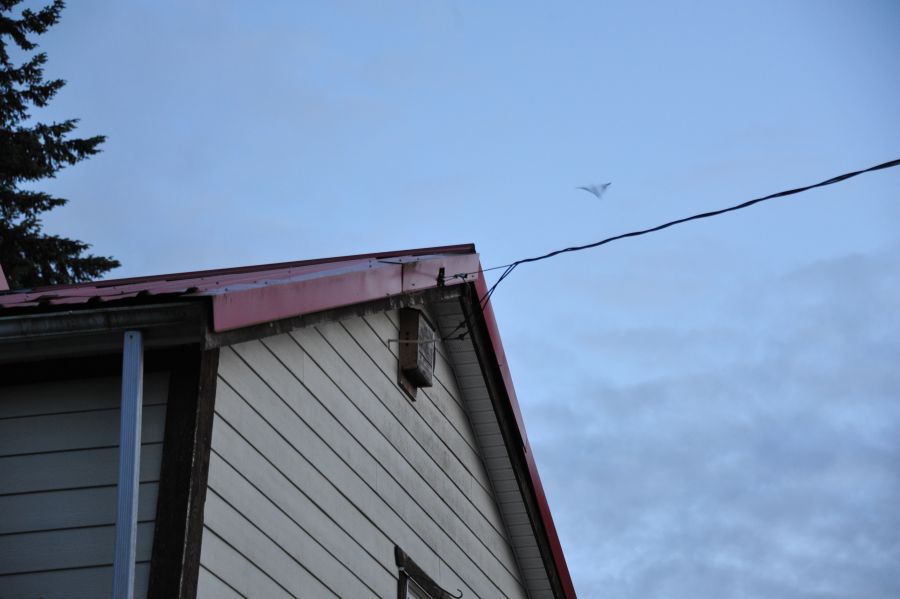
Fully grown, the little brown bat’s wingspan stretches almost the width of a dinner plate. They weigh just seven to nine grams — roughly the weight of a marshmallow. A mother bat will consume nearly her body weight in insects each night.
All the bat species on Vancouver Island eat bugs — and lots of them.
One of the mammal’s benefits for people is fewer mosquitoes. Another is that bats’ diets offer organic control of agricultural pests, a service worth tens of billions of dollars on the continent, according to the BC Community Bat Program.
Bat mothers feed for two, because back in the roosts await their newly born young. Little brown bats have just one pup per year, so this makes the citizen scientists’ job easier.
Every year, the volunteers will count bats four times at various maternal roosts around the Comox Valley.
The first two counts occur before the pups can fly, and the final two after the young ones have mastered the night sky a few weeks later. This way, they hope to accurately determine the number of pups born that year.
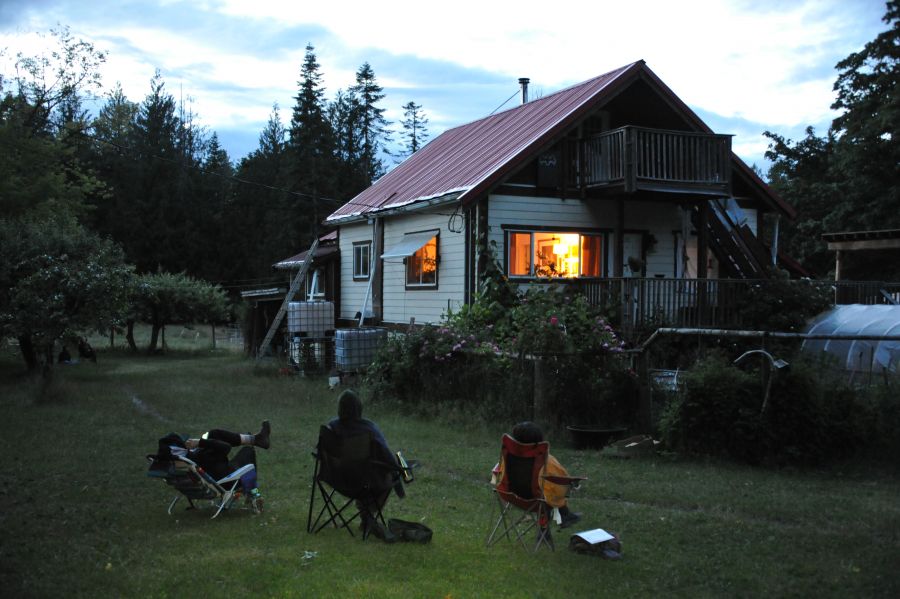
On the rural property where they’re counting, the farmhouse’s windows glow yellow against the gloom. By 10:20 pm, all the mothers are out filling their bellies. The count is over, and Thomson tallies up the numbers from the volunteers: 212 bats.
This number is up 50 per cent from last year’s count at this location.
The stakes are high with the threat of WNS. But you don’t have to tell that to Thomson or the other citizen scientists — that’s why they’re here. Forty volunteers help with counts in the area and hundreds more across the province.
Asked what motivates her, Thomson urged anyone to join a bat count themselves and see. When you’re on the first line of defence against disease, she says, you can see the results of your work each night.
For anyone interested in becoming a citizen scientist and joining future bat counts, she urged people to reach out to the BC Community Bat Program — which also offers advice for other ways to help protect Vancouver Island’s flying mammals.
Getting more volunteers on board with the effort feels urgent for those involved. Each year, bat conservationists worry that the new spring will bring a sharp decline in bat numbers.
“Everyone’s holding their breath,” Thomson says. “It’s a mild anxiety for sure.”
The relief only comes when they begin to see normal numbers in the count.
Whether WNS eventually reaches this farm, she says, is not a matter of if — but when.
Groups like Thomson’s will have no choice but to jump into first-responder mode, an expensive ordeal that requires training many people to treat colonies with a fungicide.
Cumberland Community Forest Society and other BC bat advocates are hoping to avoid that by being vigilant.
“This work feels critical,” Thomson says, “because we do have an opportunity to catch it.”








(6).jpg)






